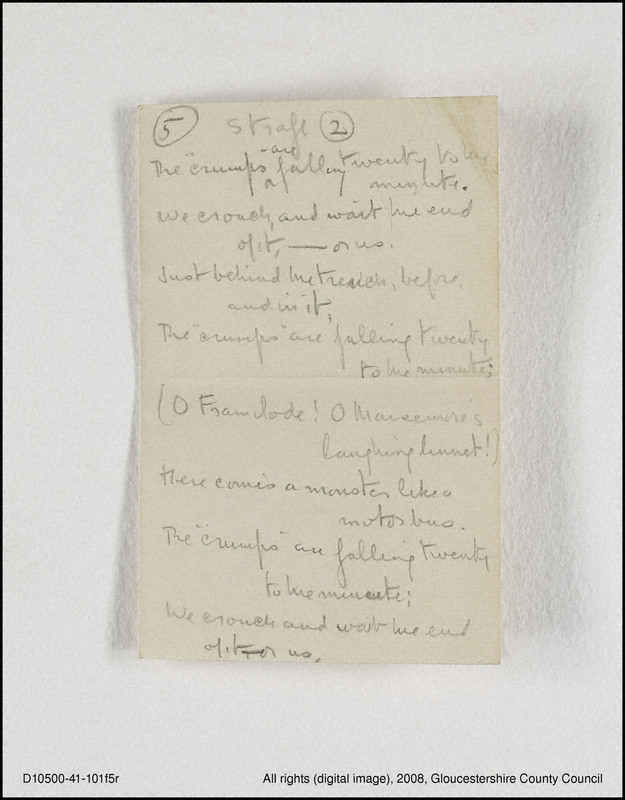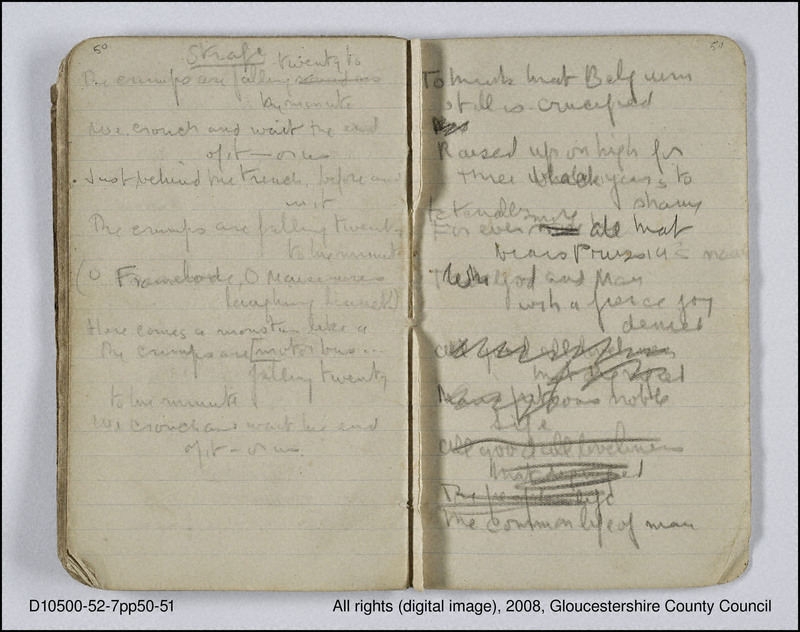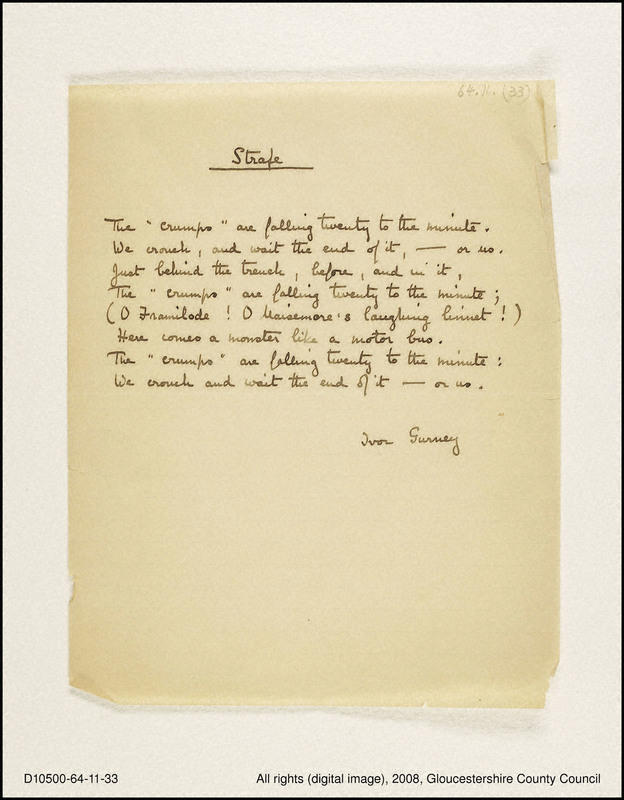Stage III: Create your own edition
Browse Diplomatic Transcripts of the Gurney Manuscripts
 |
(5) Strafe (2) The "crumps" \are/ falling twenty to the |
 |
Strafe The crumps are falling around us [crossed through] \twenty to/ |
 |
Strafe |
Previous: Stage II: Compare Manuscripts Next: Stage IV: Compare to published edition
